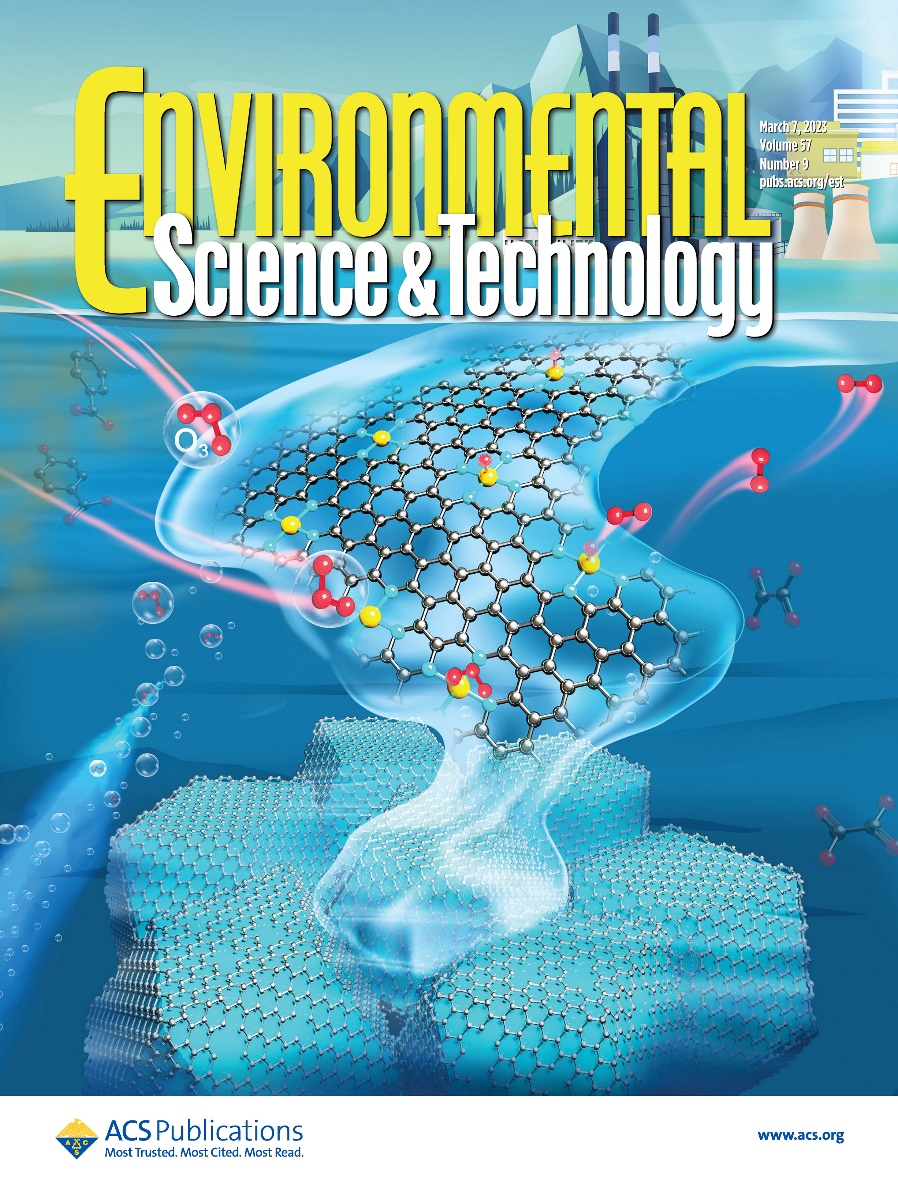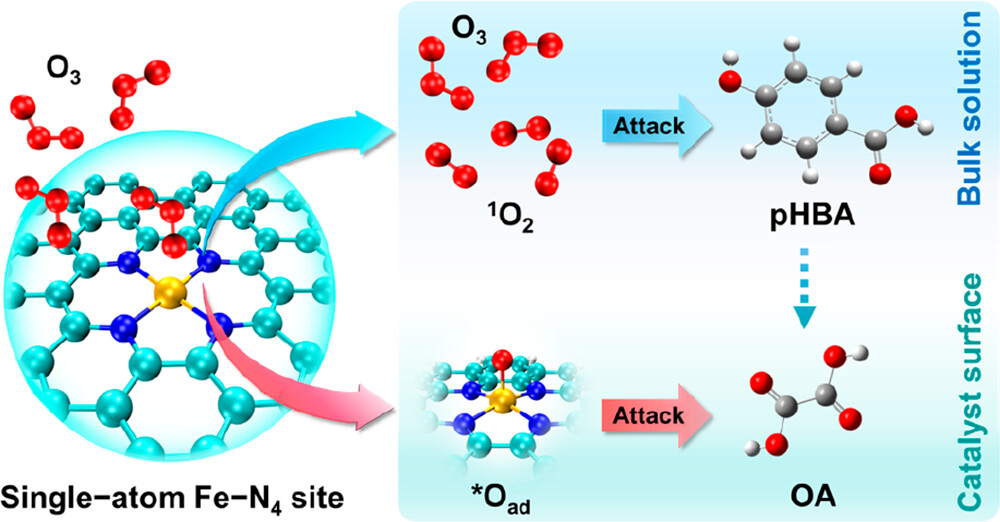Single-atom catalysts (SACs) as academic frontiers have been gradually investigated in advanced oxidation processes (AOPs) for wastewater treatment and recalcitrant organic degradation due to the inherent merits of the maximum utilization efficiency of isolated metal atoms, well-defined catalytic sites, and tailorable coordination structures. Recently, Associate Professor Zhang Xiaoyuan’s research group at the School of Environment of Tsinghua University s has made significant progress in the field of advanced wastewater treatment through single-atom catalyzed oxidation. Professor Zhang Xiaoyuan’s research group has developed a catalytic ozonation system based on SACs. The Fe-N4 sites anchored on the carbon framework exhibit superior catalytic activity and stability towards ozone. This system has achieved the efficient removal of oxalic acid (OA), and para-hydroxybenzoic acid (pHBA), as well as the advanced treatment of refractory organic wastewater, such as landfill leachate.

Figure 1: Research Findings Featured on the Front Cover of the Environmental Science & Technology (ES&T) Journal.
Differing from traditional free radical oxidation, the single-atom Fe-N4 sites catalyze ozone to selectively generate nonradical species of surface-adsorbed atomic oxygen (*Oad) and singlet oxygen (1O2). Simultaneously, a substrate-dependent behavior is observed. OA tends to adsorb on the catalyst surface and is mainly degraded by *Oad, while pHBA is mostly removed by O3 and 1O2 in the bulk solution. Density functional theory calculations and molecular dynamics simulations reveal that one terminal oxygen atom of ozone prefers bonding with the central iron atom of Fe-N4, subsequently inducing the cleavage of the O-O bond near the catalyst surface to produce *Oad and 1O2. These findings highlight the structural design of an ozone catalyst and an atomic-level understanding of the nonradical HCO process.

Figure 2: Non-radical Oxidation Processes in Single-Atom Fe Based Catalytic Ozonation.
The research findings, titled “Single-Atom Fe-N4 Sites for Catalytic Ozonation to Selectively Induce a Nonradical Pathway toward Wastewater Purification”, have been published in the journal Environmental Science & Technology. The work has been featured on the front cover of the current issue.
The corresponding author of the paper is Associate Professor Zhang Xiaoyuan of the School of Environment, Tsinghua University, and the first author is Ren Tengfei, a PhD student of the School of Environment, class of 2020. Co-authors of the paper include Prof. Huang Xia, School of Environment, Tsinghua University; Yin Mengxi, a SOE PhD student, admitted in 2019; Chen Shuning, also a SOE PhD student, admitted in 2018; and Ouyang Changpei, a SOE Master’s graduate from the Class of 2022.
Link to the paper: https://pubs.acs.org/doi/10.1021/acs.est.2c07653





